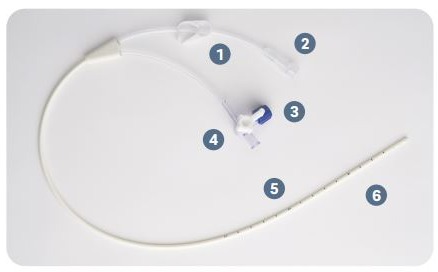
eNewsletter September 2022 Edition

Message from the CEO

Welcome to our first IRRAS eNewsletter!
The global IRRAS team has been working hard, and we are excited to introduce this new avenue to share exciting updates with you.
Most recently, IRRAS completed a rights issue financing that raised MSEK 215 before fees and expenses, which marks another important milestone in the accelerating growth of IRRAS. This fundraising extends the company’s financial runway and provides resources to expand our commercial footprint and to invest in impactful clinical data that will fuel growing adoption of our products.
As we return to our normal daily routine with pandemic-related restrictions being lifted, our team is now able to more extensively support IRRAS' global network of distribution. Over the past quarter, we’ve expanded our distributor education with multiple first-time in-person training visits and patient treatment support as IRRAflow launches accelerate across Europe, Latin America, the Middle East, and North America.
Within this month’s newsletter, we are also pleased to share the largest IRRAflow dataset to date from the neurosurgery team from Rockefeller Neuroscience Institute at West Virginia University, led by Dr. Nicholas Brandmeir. Dr. Brandmeir and team tracked the outcomes from their first 45 patients treated with IRRAflow, and the impressive dataset demonstrated that the use of IRRAflow resulted in no catheter occlusions and reduced incidence of infection, clinical vasospasm, and shunt dependence.
Finally, I’m proud to highlight that, last month, Mount Sinai Health System in New York, one of the United States' largest and most respected hospital groups, treated their first patient treatments with IRRAflow. Thus far, [three] patients suffering from intraventricular hemorrhage (IVH) have been treated and enrolled in the Deployment of Irrigating Intraventricular Catheter System (DIVE) clinical trial that is being led by Dr. Chris Kellner. The DIVE study is assessing the ability of IRRAflow to treat IVH patients more effectively than traditional treatment with an external ventricular drain (EVD).
These types of partnerships with world-renowned institutions and thought-leading physicians form the foundation of everything we strive to achieve at IRRAS, and we look forward to working with you to develop similar in the facilities in your respective territories.
Thank you for your continued support of IRRAS, and please do not hesitate to reach out if you need anything from our team at all or would simply like to make suggestions or share excitement about your progress. If you are successful, IRRAS is successful, and all of our company’s resources are available to help you every step of the way.
- Will Martin, President & CEO of IRRAS

Welcome to our Monthly eNewsletter!
IRRAS Monthly E-Newsletters will be released every first week of the month to share our most recent successes and milestones with the IRRAS community and provide the latest clinical, commercial, and training updates on IRRAS products.

West Virginia University publishes clinical data demonstrating how IRRAflow reduces catheter occlusions, shunt dependency, and vasospasm compared to legacy data.

This month's education and training section focuses on the improved IRRAflow 2.0 catheter, insertion methodology, and helpful tips to remember.

Watch the full presentation from Dr. Nicholas Brandmeir, MD, MS at West Virginia University as he discusses his early experience treating patients with IRRAflow.

WVU Publishes Largest IRRAflow Dataset to Date!
Check out exciting new data presented by Dr. Muhammad Babar Khan from West Virginia University at the Neurosurgical Society of the Virginias Annual Meeting 2022. The presentation, entitled Early Experience with Patient Treatment and Drug Delivery with IRRAflow: An Automatically Irrigating and Draining Ventricular Catheter, demonstrates how IRRAflow reduces catheter occlusions, shunt dependency and vasospasm compared to legacy data.

IRRAflow Catheter Insertion
The IRRAflow Dual-lumen catheter combines active irrigation with CSF drainage, to enhance fluid and particulate removal. Our catheter insertion video walks the user through
- IRRAflow Catheter labeling
- IRRAflow Catheter components
- IRRAflow Catheter preparation
- IRRAflow Catheter tunneling
- IRRAflow Catheter insertion

IRRAflow Catheter Tips and Tricks
When utilizing the IRRAflow 2.0 Dual-lumen catheter, there are a couple of valuable tips that will lead to a smooth insertion, and overall treatment!
1. After the catheter is placed, use a sterile marker to mark the exit site of the catheter. This will help negate further insertion when pulling the slack through the reverse tunnel and potentially decrease the amount of deep insertions and the need for pulling back the catheter, which oftentimes delays therapy and causes disruption.
2. If the physician encounters difficulty removing the stylet after the reverse-tunnel, instruct them to rotate their grip on the catheter.


3. Because of the insertion process, CSF feedback may be delayed. If CSF feedback is not observed, but the physician vehemently believes the placement is correct, instruct them to hold the end of the catheter lower than the insertion site, and close one of the lumens to check the placement of the catheter. This can accelerate the time it takes for the CSF to fill.

Assistant Professor of Neurosurgery at West Virginia University
Dr. Brandmeir, a neurosurgeon from WVU Hospital and the WVU Rockefeller Neuroscience Institute, presents his early experience utilizing IRRAflow. In the presentation Dr. Brandmeir demonstrates the positive clinical outcomes observed by using IRRAflow.
Presentation Outline:
- Why do we need a better EVD?
- What is IRRAflow, and how does it work?
- How he uses IRRAflow in the ICU?
- What are some outcomes that you can expect with IRRAflow?
